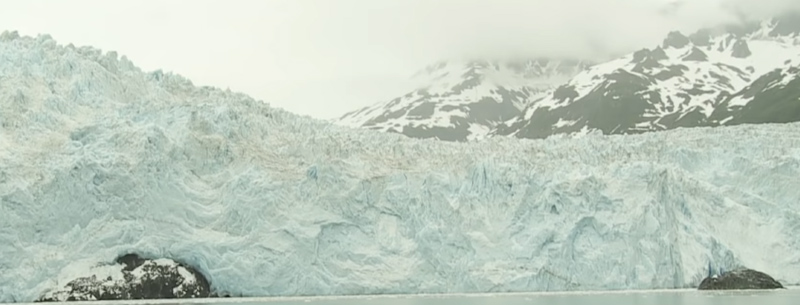A stately spruce and cottonwood forest thick with ferns and shrubs give a visitor a few clues that Kenai Fjords National Park is a young and dynamic landscape. Yet, its seemingly quiet nature is a sometimes dramatic work in progress.
Established in 1978, Kenai Fjords became a national park two years later as part of the Alaska National Interest Lands Conservation Act. The story of the landscape is much more ancient. The more than 300,000 acre Harding Icefield tops the park. The icefield is a relic of the last ice age, which covered much of North America. The ice is still in flux. Generally speaking, glaciers are retreating along the park coast, uncovering glacially carved valleys that fill with seawater to form the stunning fjords for which the park is famous.
Most visitors to the park drive thirteen miles out to Exit Glacier, one of the few in the state that you can also approach on land. From the ranger station at the end of the track, a short stroll leads to the still active glacier, though signs warn you back from the ice wall and its blue clefts. Eight such tidewater glaciers calve icebergs into the sea with thundering booms.
The park’s wildlife is as varied as its landscape. The fjords hold a wealth of marine life – sea otters, porpoises, seals, stellar sea lions, humpback, and minke whales, as well as the seabird rookeries on the cliffs of the Chiswell Islands. The best cruises in the park are offered aboard the boats of Kenai Fjords tours; you can go for the longer day-tours which go right up to the calving tidewater glaciers.
Near the park lies the town of Seward, the key freight terminal and gateway to the national park. Here, you can visit the Sealife Center, which focuses on marine research and visitor education. The center offers the chance to watch ongoing cold water research in action and marvel at the antics of marine animals.
Kenai Fjords Trivia
- The Kenai Fjords coast is geologically very active as the Pacific Plate slips under the North American Plate. This usually slow movement is dragging the Kenai Mountains into the sea, deepening the fjords. Sometimes the action is dramatic: In 1964, the Good Friday Earthquake dropped the shoreline six feet in under 4 minutes!
- Worms — ice worms — exist on frozen glacial surfaces.
- Thirty-two glaciers flow down from the icefield, fed by storms that drop hundreds of inches of snow at the high elevations of the Harding Icefield.
- Driving to Exit Glacier is like a drive back in time. A few miles from the glacier face, the forest is thick and mature. The landscape changes to hardy alders and willows dominate as you approach the glacier. And at the edge of the glacier, bare rock and a few pioneer plants gain toeholds in the skimpy soil.
Kenai Fjords Attractions
- Exit Glacier has a new nature center. It provides an orientation to the Exit Glacier valley and is a great first stop as visitors walk the roughly half-mile to the face of the glacier. A small campground is nearby.
- Public use cabins are available for rent in some of the fjords and are popular with kayakers and private boaters. In the winter, there’s a public use cabin available at Exit Glacier.
- Commercial boat tours are available and the best way to see much of the Park.
